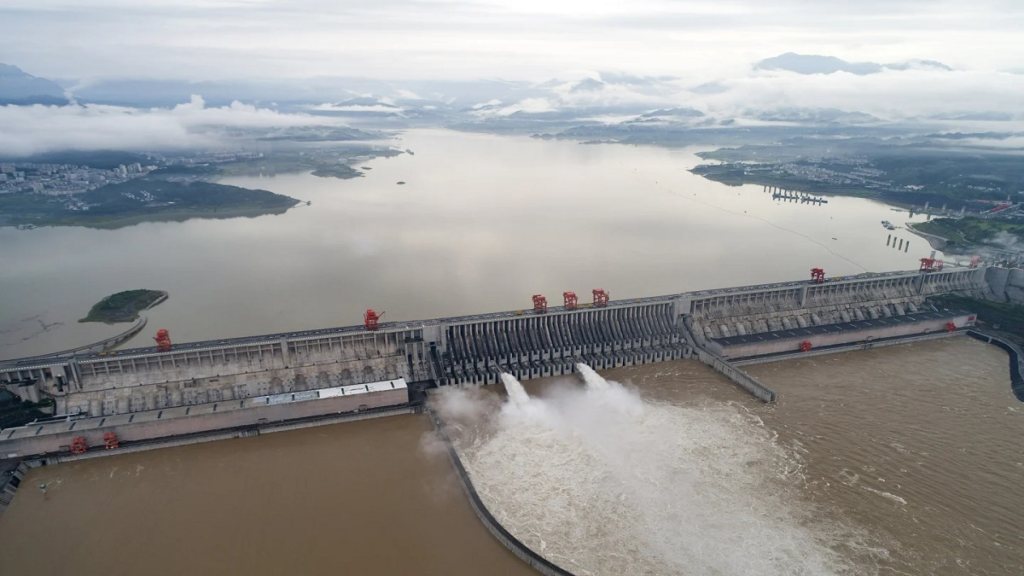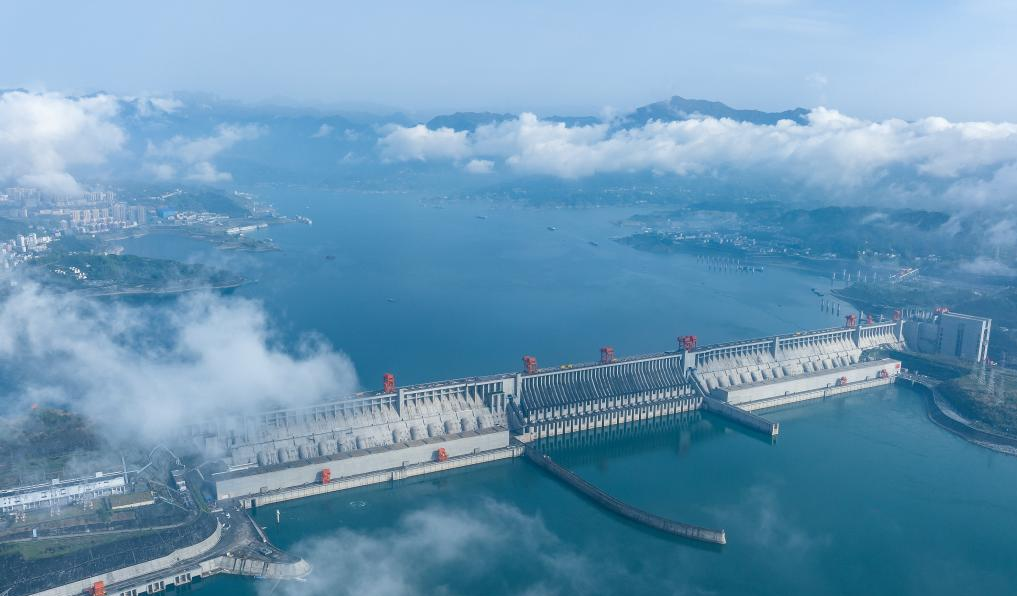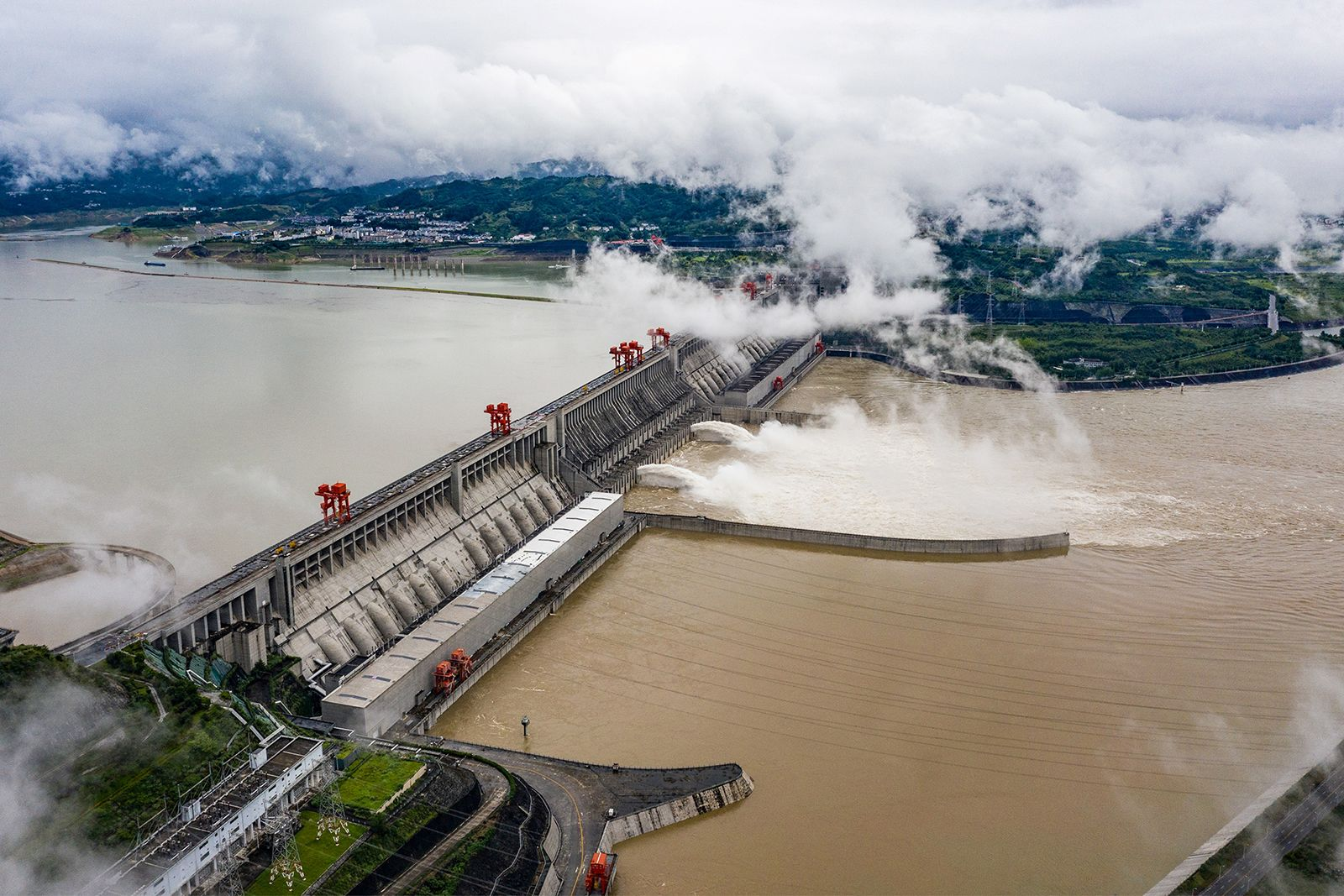The Three Gorges Dam of China is not just the largest hydroelectric project in the world; it has also sparked significant discussions regarding its potential effects on our planet. This dam, completed in 2012, stands as a monumental feat of engineering, boasting a reservoir that holds approximately 40 cubic kilometers of water—equivalent to about 10 trillion gallons.
The capacity of this reservoir allows the dam to generate up to 22,500 megawatts of electricity, effectively meeting the energy needs of millions across China. However, the implications of the Three Gorges Dam of China extend beyond its remarkable energy production.
Read : Finland to Return Giant Pandas Back to China Over Cost of Upkeep
NASA scientists have suggested that this massive reservoir might influence the Earth’s rotation and its axial tilt, raising questions about the environmental and geological impacts of such large-scale projects.
Hydroelectric Power and Its Importance
The Three Gorges Dam of China plays a crucial role in the country’s energy strategy. With energy consumption rising exponentially, especially in urban areas, the demand for sustainable and renewable energy sources has never been higher.
Read : The Titans of Finance: Exploring the World’s Top 10 Largest Banks in 2024
The dam harnesses the power of the Yangtze River, converting the kinetic energy of flowing water into electricity. The sheer scale of the dam allows it to generate more power than any other facility globally, significantly contributing to China’s energy grid.

Hydropower, as a clean energy source, is often viewed as an essential component in the fight against climate change. By providing a substantial amount of electricity without emitting greenhouse gases, the Three Gorges Dam of China presents itself as a sustainable alternative to fossil fuels.
This aspect has garnered international attention, as countries around the world strive to transition towards greener energy solutions.
However, the dam’s hydroelectric capabilities are not its only contribution. Beyond energy production, the Three Gorges Dam of China plays an instrumental role in controlling seasonal flooding along the Yangtze River.
By regulating the water flow, the dam helps protect nearby towns and agricultural lands from the devastating effects of floods, which have historically caused significant loss of life and property. In addition, the dam enhances river navigation, allowing for more efficient transportation of goods and improving trade opportunities in the region.
Environmental and Social Impacts
Despite the apparent benefits, the Three Gorges Dam of China has been the center of considerable controversy. The construction of the dam required the displacement of over 1.3 million people, leading to widespread social upheaval.
Many residents were relocated from their homes and communities, with their lives profoundly affected by the project. The flooding of 632 square kilometers of land not only displaced human populations but also severely impacted local ecosystems and wildlife habitats.
The environmental implications of the Three Gorges Dam of China are significant and multifaceted. The flooding caused by the reservoir submerged vast areas of farmland, forests, and historical sites, resulting in the loss of biodiversity and altering the natural landscape.

Many species that thrived in the original ecosystem faced new challenges for survival, while others became endangered or extinct due to habitat destruction.
In addition to the direct environmental consequences, the dam’s operation has been linked to increased sedimentation in the Yangtze River. This sediment buildup can affect water quality, impacting aquatic life and human communities relying on the river for drinking water and agriculture.
Furthermore, the alteration of natural water flow patterns can lead to changes in local climates, which can have long-term effects on agriculture and biodiversity in the region.
NASA’s Findings and Global Implications
NASA’s studies on the Three Gorges Dam of China have revealed intriguing insights into how such a colossal structure may impact the Earth itself. Scientists have indicated that the sheer weight of the water in the reservoir could influence the Earth’s rotation.
Specifically, their research suggests that the dam’s reservoir might increase the length of a day by approximately 0.06 microseconds. While this may seem negligible, it represents a measurable shift caused by human activity.

Moreover, the mass of the water stored in the Three Gorges Dam of China may also contribute to a shift in the planet’s axis by about 2 centimeters. Such changes, although small on a global scale, highlight the interconnectedness of human engineering and natural processes.
The dam serves as a case study for examining how large infrastructural projects can create unintended consequences that extend beyond their immediate goals.
These findings have implications for other countries considering similar large-scale hydroelectric projects. As nations strive to meet their energy needs, the Three Gorges Dam of China serves as a reminder of the importance of considering environmental and geological impacts alongside economic benefits.
Projects of this scale necessitate careful planning and ongoing assessment to minimize negative repercussions and ensure sustainable development.
The Three Gorges Dam of China encapsulates the complexities inherent in balancing development and sustainability. While the dam has made significant strides in generating clean energy and controlling floods, the social and environmental costs are considerable.
The displacement of millions and the ecological disruption necessitate a critical examination of future projects to ensure that they do not sacrifice the well-being of people or the planet for the sake of progress.
As the world moves towards renewable energy sources, lessons learned from the Three Gorges Dam of China must inform policy decisions and engineering practices. With a focus on sustainable development, nations can pursue energy projects that not only meet immediate needs but also safeguard the environment for future generations.
The ongoing dialogue surrounding the dam serves as an essential platform for discussing these pressing issues, highlighting the need for a comprehensive approach to energy and environmental stewardship.
In summary, the Three Gorges Dam of China stands as both a testament to human ingenuity and a cautionary tale of the potential repercussions of large-scale infrastructure projects. By understanding its multifaceted impacts, we can better navigate the challenges of modern development in a way that respects both people and the planet.

